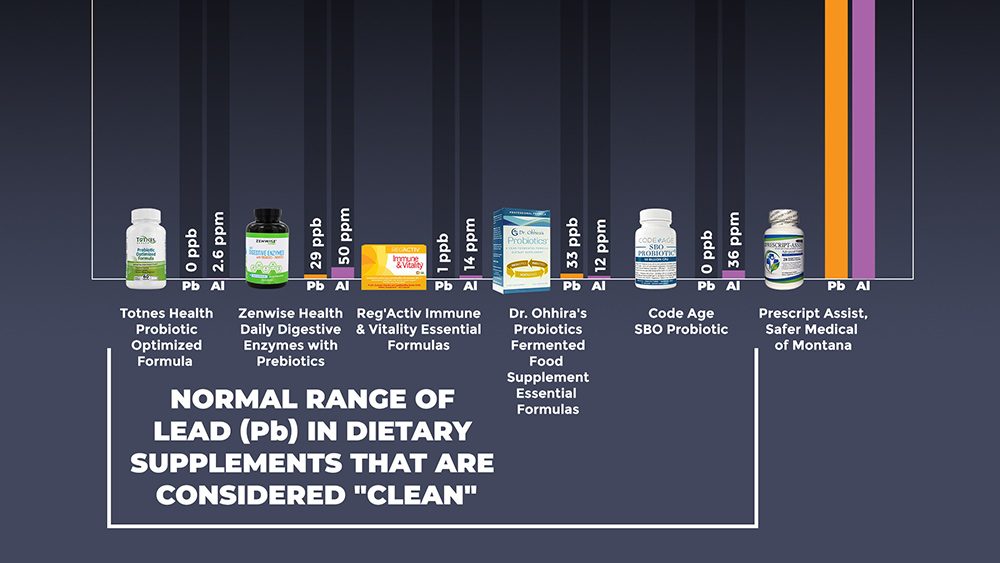Report: Lead exposure linked to uptick in annual heart disease deaths in the US
10/21/2020 / By Michael Alexander

Lead exposure may be driving cases of heart disease in the United States, a study published in the Lancet said.
The study, which analyzed data on 14,000 adults, noted that the heavy metal contributed to as many as 412,000 premature deaths each year in the United States – a number estimated to be 10 times larger than the figures mentioned in previous studies.
A deadly neurotoxin, lead has also been shown to contribute to other health issues such as hypertension, atherosclerosis, ischemic heart disease, and stroke.
In addition, the researchers, led by principal author Bruce Lanphear of Simon Fraser University in Canada, also found that there are no “safe” blood lead levels in both children and adults.
Lanphear noted that people with the highest lead levels in their bodies had a 37 percent greater risk than normal of premature death and a 70 percent greater risk of death from cardiovascular disease.
According to the study, low levels of lead in the blood—which the researchers described as an “important, but overlooked” risk factor—were linked to instances of cardiovascular disease, with the risk of premature death from heart disease increasing as the blood levels went up.
Their findings, the research team said, stressed the importance of continuing efforts to reduce environmental lead exposure.
Children more susceptible to damage from lead
According to the study, children by far, are the most vulnerable when it comes to lead poisoning, mainly because of their smaller, still-developing systems.
As noted by experts, this is exacerbated by the fact that young children absorb up to five times as much ingested lead as adults from a given source. (Related: Children with high lead exposure also commit more crimes as adults.)
Ingestion and exposure to lead can cause the following symptoms to appear in children:
- Behavior problems
- Low IQ
- Poor academic performance
- Hearing problems
- Learning disabilities
- Delayed and stunted growth.
In addition, research shows that children with elevated lead levels in their bodies are more inattentive, hyperactive and disorganized. They were also observed to be less capable of following directions at school, with one study even showing higher drop-out rates among them. Elevated lead levels were also linked to aggression and delinquency.
What are the harmful effects of lead?
Lead, according to the World Health Organization (WHO), is a cumulative toxicant due to the fact that it is distributed to the brain, liver, kidney and bones, where they accumulate over time.
Aside from being a risk factor for cardiovascular disease, exposure to this toxic heavy metal is also linked to the following health problems:
- Abdominal pain
- Aggressive behavior
- Constipation
- Sleep problems
- Headaches
- Loss of appetite
- Fatigue
- High blood pressure
- Numbness
- Memory loss
- Anemia
- Kidney dysfunction
- Muscle weakness
- Fertility problems
- Miscarriage
- Seizures
- Coma
- Encephalopathy
High levels of lead have also been linked to death.
How can one avoid exposure to lead?
The most common sources of lead in the environment, according to experts, are lead-based paint and lead-contaminated dust in older buildings, as well as contaminated air, water and soil. Other sources include lead plumbing and fuel emissions.
As noted by experts, the best way to avoid lead poisoning is to actively avoid getting exposed to the heavy metal.
This can be done by following these steps:
- Have your home checked by a licensed lead inspector. This will take the guesswork out of any renovations or changes you want to do regarding the presence of lead in your home, especially if it was built before 1978.
- Avoid tracking dirt into your home. Lead can be present in the soil from outside your house. One way to stop it from entering your home is by leaving your shoes outside the door.
- Replace your pipes. Lead was the main component of household plumbing before 1986. If you aren’t sure about the age of your plumbing, let the water flow out of the tap for at least one minute before using the water for drinking or cooking. You can also do this to faucets in hotels when you are traveling.
- Eat healthy foods. Certain foods can help shield the body against lead poisoning. These include calcium-rich foods such as unpasteurized dairy, yogurt, tofu and green, leafy vegetables. Iron-rich foods such as lean meat, beans, whole grain cereals and peanut butter are also helpful against lead poisoning. Foods high in vitamin C such as oranges, grapefruits, tomatoes, and green peppers can also help protect the body from lead.
Lead is one of the most toxic elements on earth, which means that one must do what he can to avoid needless exposure to the heavy metal.
Sources include:
Tagged Under: Chemical exposure, Ecology, Lead, lead exposure, lead poisoning, medical research, Toxic Metals, toxins
RECENT NEWS & ARTICLES
COPYRIGHT © 2017 METALS NEWS




















